Stumbled upon a picture of a cat that looks like it leaped straight out of a wild African dream, with spots and ears that could give any satellite dish a run for its money? That, my friend, is a serval cat, and it’s about time we dived deep into the world of these fascinating creatures.
They’re not your average house cat, and they pack a punch of wild, untamed beauty that’s as intriguing as it is breathtaking. So, let’s get up close and personal with the serval cat, shall we?
What is the Serval Cat?
The serval, known scientifically as Leptailurus serval, is a wild cat native to Africa. Picture this: a medium-sized, slender feline with golden-yellow fur, decked out in black spots and stripes, sporting the most impressive set of ears you’ve ever seen on a cat. Servals are like the secret agents of the savannah – sleek, stealthy, and superbly adapted to their environment.
Originating from various parts of sub-Saharan Africa, these cats are all about the grassland and savannah life, although they’re pretty versatile and can be found in mountainous areas and near water bodies too. They play a crucial role in their ecosystem, keeping the rodent and small bird populations in check. In the grand tapestry of the African wild, servals are the unsung heroes, maintaining the balance without hogging the limelight like lions and elephants do.
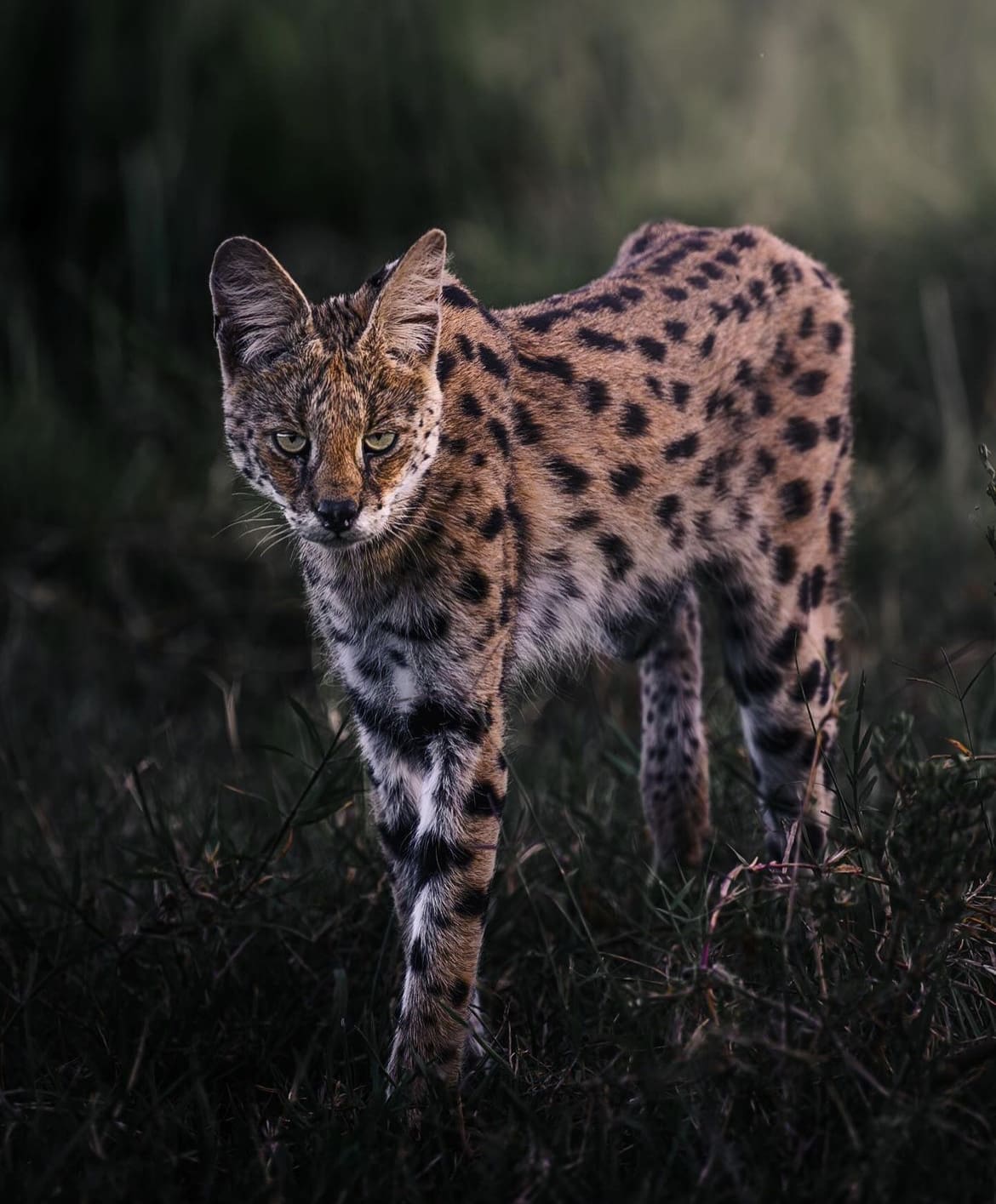
What do Servals Look Like?
Imagine a creature that embodies the phrase “long, lean, and mean” – in the most elegant way possible, of course. Servals are a testament to nature’s design prowess, with a body built for precision hunting. They stand out with their tawny, spotted coat that camouflages perfectly in the tall grasses of the African savannah. But the real showstopper? Their ears. Large, rounded, and always on the move, these radar dishes can pick up the slightest rustle, making them formidable hunters.
Their beauty is matched by their agility. With long legs that seem to stretch forever and a slender body, servals have a grace that’s hard to match. These cats have mastered the art of the pounce, and when they leap, it’s poetry in motion. The contrast of their striking coat against the savannah backdrop is nothing short of stunning, making servals a photographer’s dream subject.
How Big are Serval Cats?
Servals are the epitome of sleekness. They’re not your chunky, cuddle-bug type of cat but rather the lithe, athletic type. On average, a serval weighs between 20 to 40 pounds, with a body length of about 23 to 36 inches, not including their tail. When it comes to height, these cats can stand up to 24 inches at the shoulder, making them one of the tallest cats relative to their body size.
Their size gives them an edge, allowing them to peer over tall grasses while stalking their prey and to leap incredible distances to catch a meal. Imagine being able to jump up to 9 feet in the air – that’s a serval for you. These measurements make servals significantly larger than the average house cat but still on the smaller side when compared to the big cats of Africa.

Serval Teeth
When it comes to dining in the wild, servals have got the perfect set of tools. Their teeth are like a Swiss Army knife designed for the ultimate predator. Sharp, strong, and perfectly aligned for their carnivorous diet, serval teeth are made to grip and tear meat with ease. Unlike your domestic furball who might struggle with a tough piece of kibble, servals use their canines to deliver a fatal bite to their prey, while their small, sharp incisors are perfect for shearing meat off the bone.
What’s really cool about their dental setup is how it reflects their hunting style. Servals aren’t about the scavenger life; they’re precision hunters, preferring to catch their meals fresh. Their teeth are crucial for this, allowing them to quickly dispatch their prey and enjoy a meal without much fuss. It’s all about efficiency in the wild, and servals have this down to a science.
What do Servals Eat?
Speaking of meals, let’s talk about the serval diet. If you’re picturing a serval chowing down on a salad, think again. These cats are obligate carnivores, meaning meat is their main squeeze. Their diet is as diverse as the African landscape, feasting on rodents, small birds, frogs, insects, and sometimes fish. Imagine having the skill to catch a bird mid-flight or a fish out of water – servals do this with a grace that would make any Olympian jealous.
Their preference for small prey doesn’t mean they’re not ambitious. Servals have been known to take down larger animals when the opportunity arises, showcasing their adaptability and hunting prowess. This varied diet helps them thrive in different environments, from wetlands to savannahs, making them one of the most versatile predators out there.
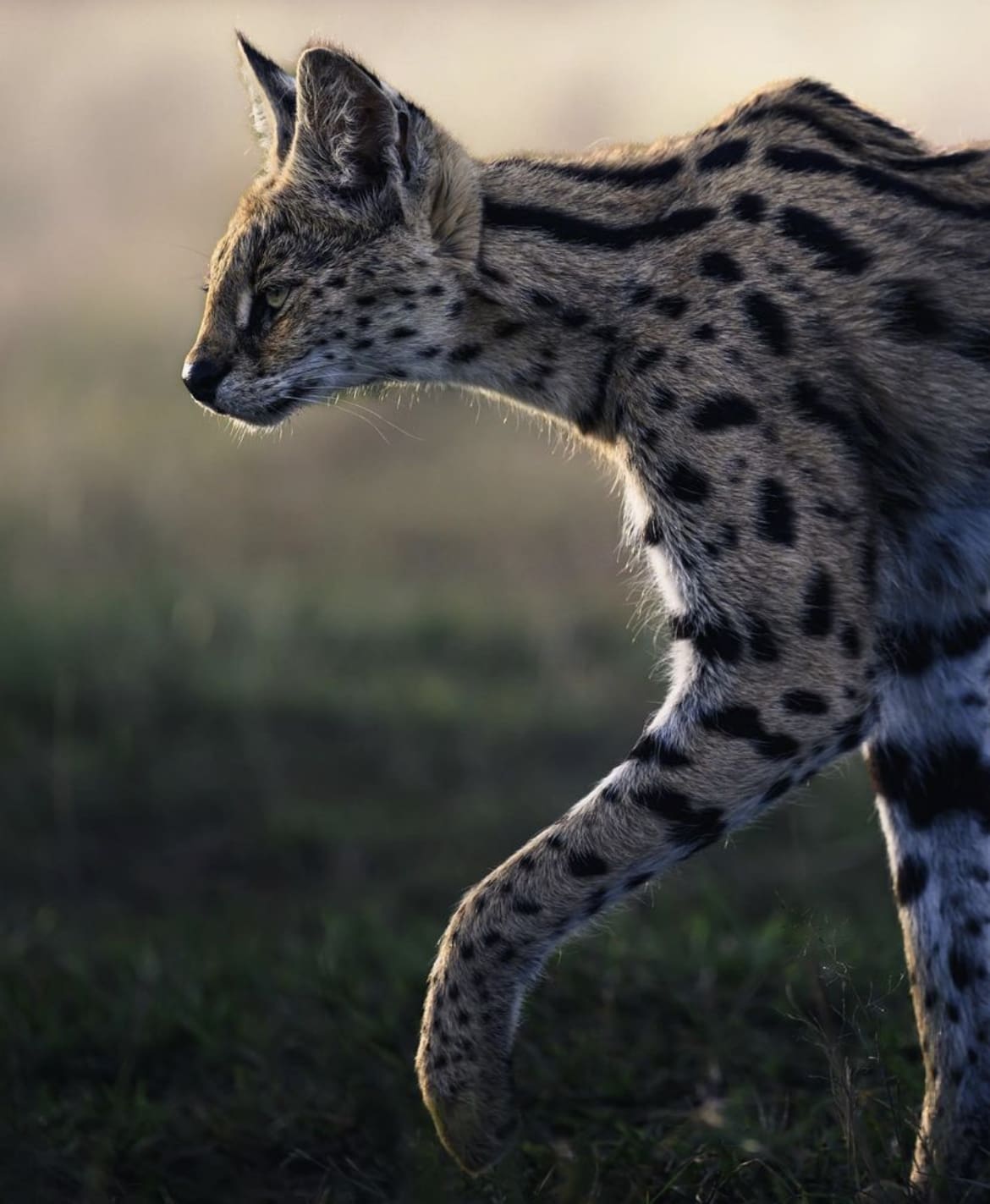
How do Servals Hunt?
Now, onto the good stuff – how servals hunt. If you’ve ever watched a nature documentary, you know the drill: the predator silently stalks its prey, waiting for the perfect moment to strike. Servals take this to the next level. Their long legs and large ears aren’t just for show; they’re integral to their hunting strategy. Servals use their height to peer over grasses, keeping an eye out for unsuspecting prey. Once they’ve spotted dinner, it’s all about stealth.
These cats are masters of the silent stalk. They move with such precision and grace that their prey hardly knows what’s coming. And when the time is right, servals unleash their secret weapon: their incredible jumping ability. They can leap vertically to snatch birds right out of the air or pounce forward to cover up to 9 feet in a single bound, catching their prey off guard.
But the real MVP here are those ears. Servals use their acute hearing to detect the slightest movements, even animals burrowing underground. Once they’ve honed in on their target, there’s little escape. Their hunting success rate is one of the highest among the wild cats, making them the envy of the savannah.
Are Servals Territorial?
Absolutely, servals are the lords of their own little kingdoms. These cats are fiercely territorial, marking their domain with scent marks that tell other servals to back off. Their territories can vary widely in size, but they’re generally vast, spanning several square kilometers. This space allows them to hunt, mate, and roam without bumping into their neighbors too often.
Male servals are particularly possessive of their turf, ensuring that no other males encroach on their space. Females, too, have their own territories, which can overlap with those of males, especially during mating seasons. These territories are essential for servals’ survival, providing them with enough prey to sustain themselves and, for females, a safe space to raise their kittens.
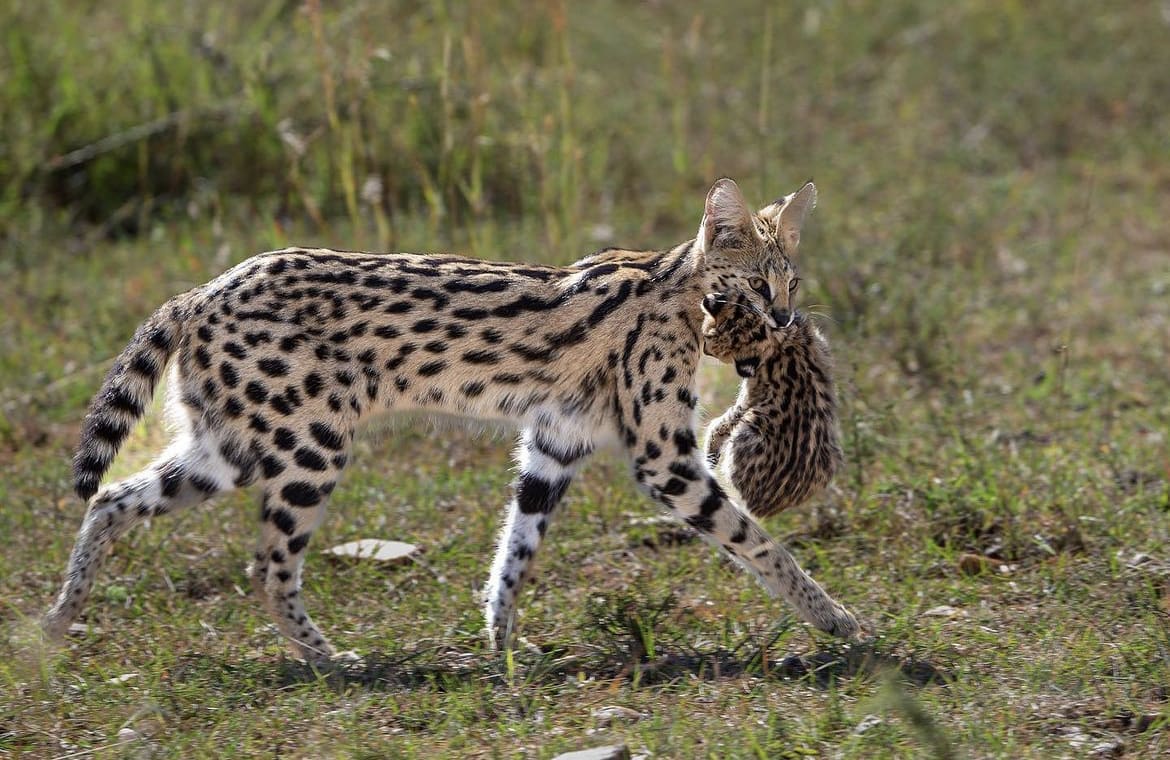
Are Servals Aggressive?
When it comes to their demeanor, servals are like the cool loners of the savannah. They’re not out to pick fights but don’t mistake their aloofness for timidity. In the wild, servals can be aggressive if threatened or cornered, especially during encounters with other servals over territory or mating rights. Their aggression is primarily defensive, a natural instinct to protect themselves and their turf.
However, translating their behavior to a domestic setting, servals can be unpredictable. While they might bond with their human caregivers, their wild instincts can surface unexpectedly. They’re not your typical lap cat, and their playful swat might pack more of a punch than expected. It’s this unpredictability that makes understanding serval behavior crucial for anyone considering them as a pet.
Servals as Pets
Now, here’s where things get really interesting. The idea of keeping a serval as a pet has gained traction, especially among those who fancy the allure of living with a wild animal. But let’s be clear: servals are not your average pets. They require a level of care, space, and understanding that goes beyond what most domestic cats need.
First off, they’re escape artists. Those long legs? Perfect for jumping fences and exploring beyond their designated space. Their hunting instincts? Still very much intact, which can pose a challenge for keeping other small pets—or even the neighbor’s pets—safe. And their diet? It’s not something you can easily pick up at the local pet store. Servals need a diet that mimics their natural prey, which means raw meat and supplements to keep them healthy.
Moreover, legality is a big issue. Not all places welcome the idea of keeping a wild cat as a pet, and for good reasons. The safety of both the animal and the community is a concern, along with the ethical implications of removing these majestic creatures from their natural habitat or breeding them for domestic life.
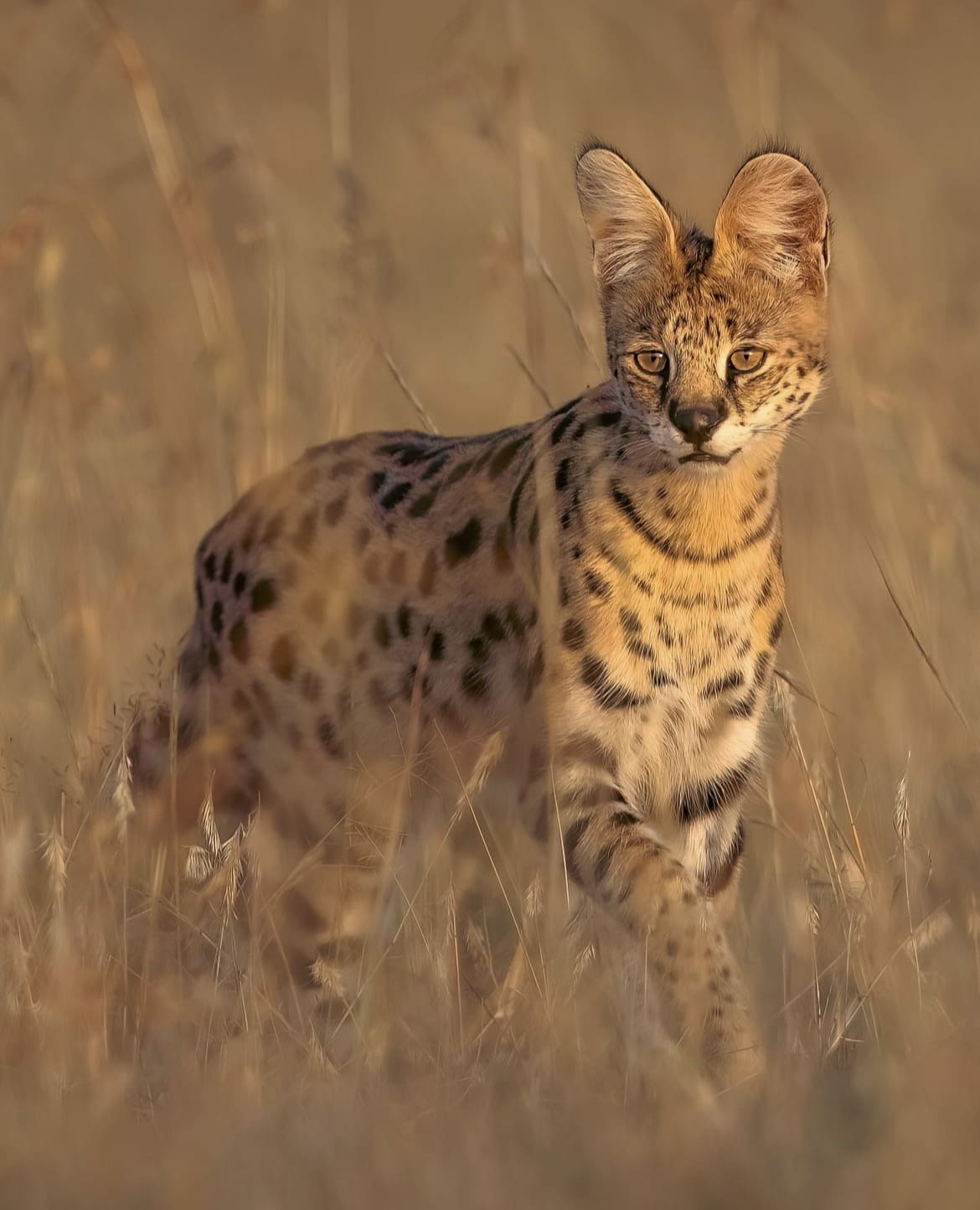
Where do Servals Live?
Servals boast a pretty impressive address book. These cats are found throughout sub-Saharan Africa, thriving in a variety of environments. From the rolling savannahs to the mysterious wetlands, servals make themselves at home wherever there’s enough cover for hunting and access to water. They’re particularly fond of reed beds and tall grasses, which provide perfect camouflage for stalking prey and hiding from larger predators.
Unlike other feline counterparts who might prefer the solitude of dense forests or the harshness of the desert, servals are all about the savannah life. Here, in the grasslands, they can use their long legs to their advantage, spotting prey over tall grasses and using their superb jumping skills to catch birds in mid-flight. However, they’re also adaptable enough to venture into mountainous regions, proving that these cats have a knack for making the most out of their surroundings.
How Many Servals Are There in the Wild?
Now, this is where things get a bit tricky. Counting servals, like trying to pin down any wild animal population, is no walk in the park. These cats are elusive, solitary, and blend into their environments all too well. However, estimates suggest that servals are relatively widespread and not currently at immediate risk of extinction. But don’t let that fool you into complacency; like all wildlife, servals face their fair share of threats.
The lack of precise population data is a concern for conservationists who are keen on monitoring serval numbers to ensure they remain stable. These cats are indicators of a healthy ecosystem, and any significant changes in their population could signal broader environmental issues.
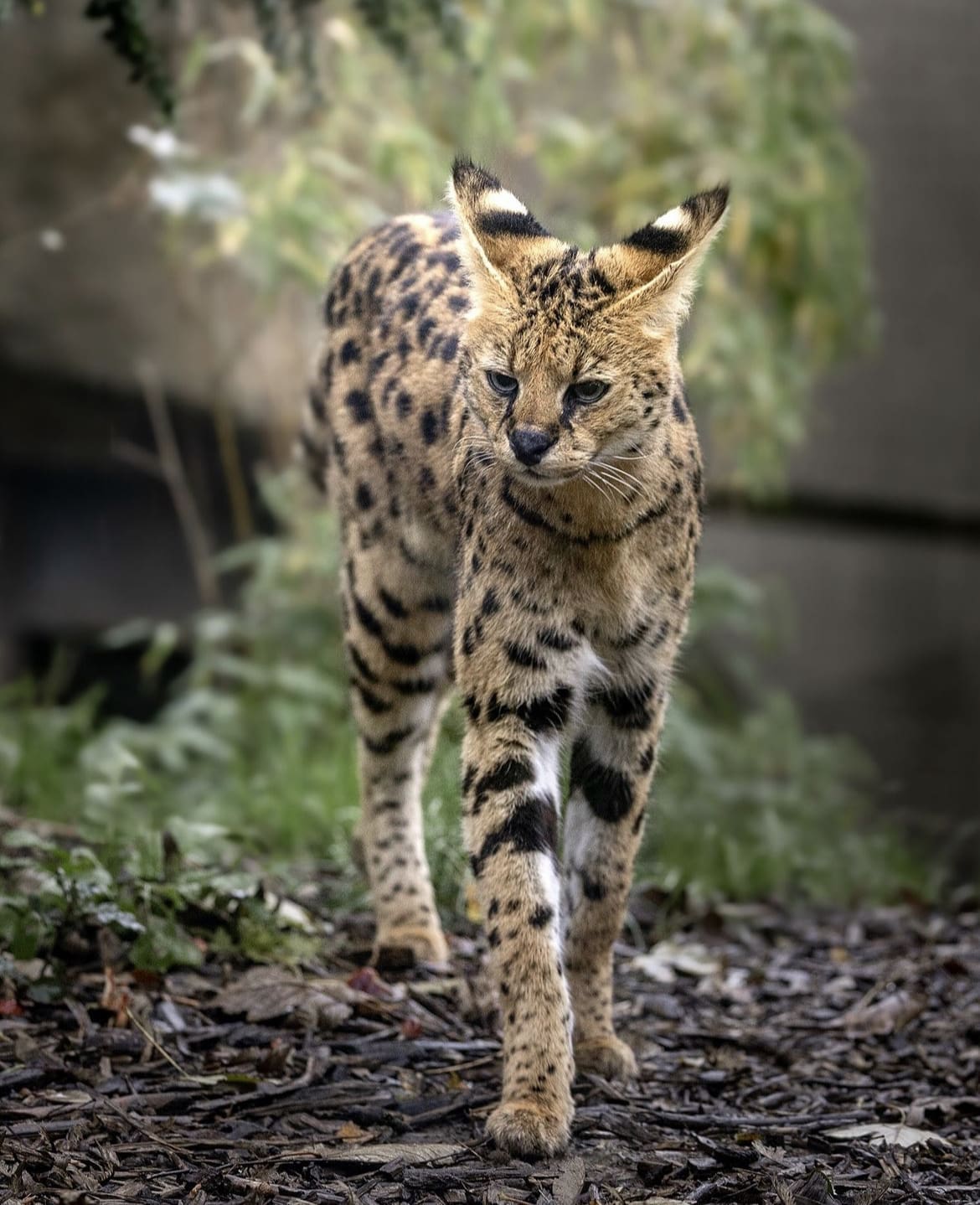
Are Servals Endangered?
As of our last dive into the conservation status, servals are listed as “Least Concern” by the IUCN Red List. But let’s not pop the champagne just yet. “Least Concern” doesn’t mean “no concern.” Habitat loss, human-wildlife conflict, and the illegal pet trade pose significant threats to serval populations.
Habitat loss, in particular, is a growing concern as Africa’s wild spaces are increasingly encroached upon by agriculture and urbanization. This not only reduces the serval’s hunting grounds but also brings them into closer contact with humans, leading to conflict. Additionally, the allure of servals as exotic pets leads to poaching and illegal trafficking, further stressing wild populations.
Threats to Serval Cats in the Wild
The wild is no easy ride, and for servals, the road is getting bumpier. Habitat loss is the big bad wolf here, with lands once roamed by servals being transformed into farmlands, cities, and infrastructures.
Then there’s poaching, not just for the illegal pet trade but also for their beautiful fur, a demand that, although decreased, still poses a risk. Add to this the human-wildlife conflict, where servals are caught in traps or killed by livestock owners, and you’ve got a recipe for conservation concern.
Where to See the African Savannah Cat on Safari
For those itching to see these agile hunters in action, you’re in luck. Safaris in East Africa, particularly in countries like Kenya and Tanzania, offer some of the best chances to spot servals in the wild.
The Masai Mara and Serengeti are like the serval’s runway, where they strut their stuff amidst the vast savannah. Early mornings or late afternoons are prime time for serval sightings, as they venture out to hunt or bask in the sun.

Tips for Spotting African Savannah Cats in the Wild
Want to up your game in serval spotting? Patience and a keen eye are your best bets. These cats are masters of stealth, but their curiosity might give them away. Look for the tall grasses that twitch or listen for birds’ alarm calls – a sign a predator is nearby. And remember, servals are solitary, so spotting one is a special treat, a moment of magic where you witness Africa’s wild heart.
Facts about Servals
- Jumping Jacks: Servals can leap up to 9 feet in the air to catch prey.
- Lone Rangers: These cats are solitary, coming together only to mate.
- Whispered Calls: Servals communicate with soft chirps, growls, and hisses.
- Night Owls: They’re primarily nocturnal, making dawn and dusk the best times for sightings.
- Lifespan: In the wild, servals can live up to 10 years, but in captivity, they can reach 20.
Myths about Servals
- Domestic Dwellers: Despite their appearance, servals are not domestic cats and have wild instincts.
- Easy Pets: The idea that servals are easy pets is a myth; they require specialized care and environments.
- Aggression Overload: Not inherently aggressive, servals display aggression mainly when threatened or in fear.
